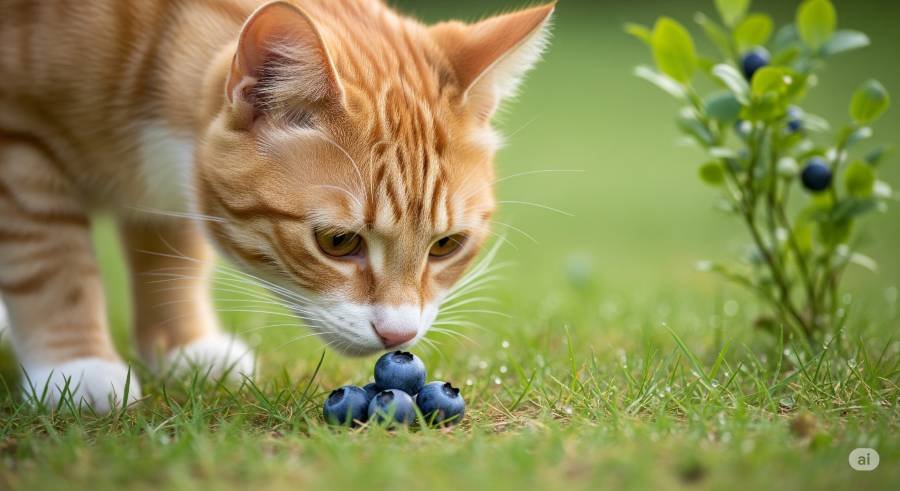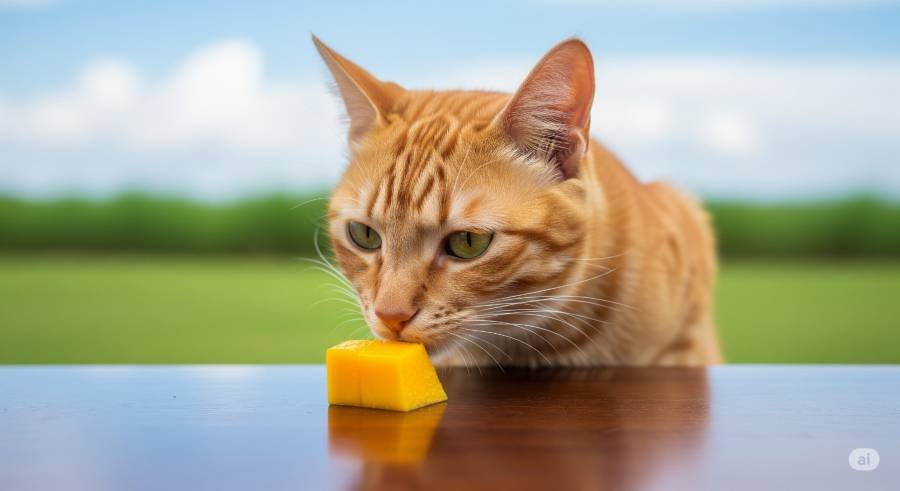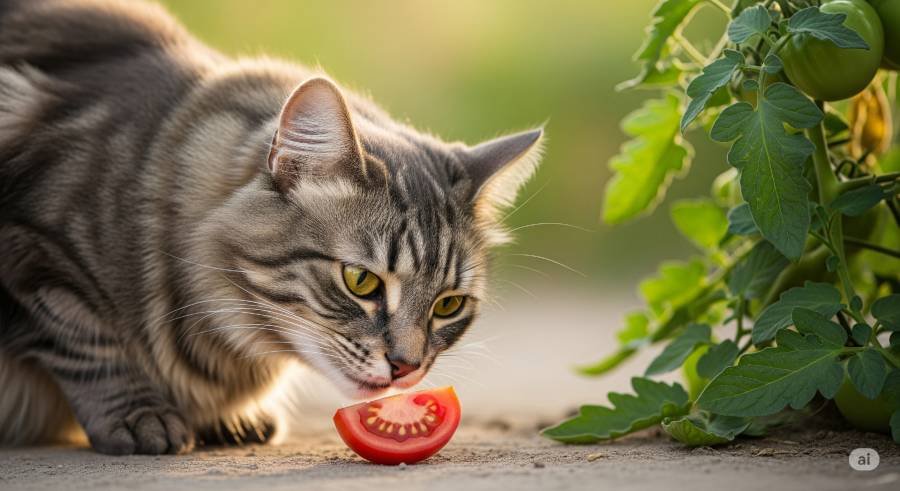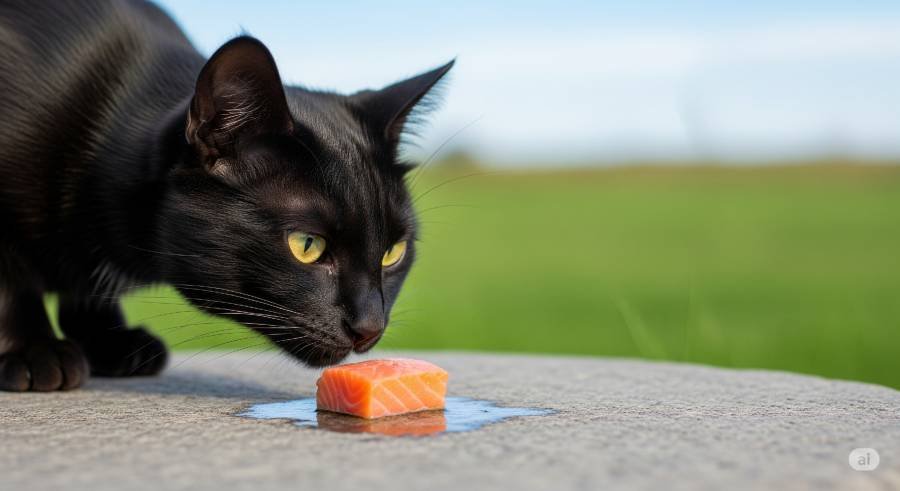Yogurt can be a safe treat for some cats in small amounts, but it must be chosen and offered carefully.
While plain, unsweetened yogurt may provide minor health benefits, not all cats can tolerate it, and certain types of yogurt are unsafe.

Potential Benefits of Yogurt for Cats
When given sparingly, plain yogurt may offer some advantages for cats:
- Probiotics: Plain yogurt with live, active cultures (e.g., Lactobacillus or Bifidobacterium) can support gut health by promoting beneficial bacteria. This may help cats with mild digestive issues, such as diarrhea, though results vary.
- Protein and Calcium: Yogurt contains protein and calcium, which can supplement a cat’s diet in tiny amounts. However, these nutrients are better sourced from meat-based foods tailored to feline needs.
- Hydration: Yogurt’s high water content (around 85%) can contribute to hydration, particularly for cats reluctant to drink water.
- Palatability: Some cats enjoy the creamy texture and mild flavor of plain yogurt, making it an appealing occasional treat.
These benefits are limited, and yogurt should only be an infrequent addition to a cat’s meat-focused diet.
Risks and Dangers of Yogurt for Cats
While plain yogurt can be safe in moderation, several risks must be considered:
- Lactose Intolerance: Most cats are lactose intolerant, as they lose the ability to produce sufficient lactase (the enzyme that digests lactose) after weaning. Consuming yogurt may cause digestive upset, including bloating, gas, diarrhea, or vomiting, especially in sensitive cats.
- Added Sugars and Sweeteners: Flavored or sweetened yogurts often contain sugar or artificial sweeteners like xylitol, which is highly toxic to cats. Even natural sweeteners (e.g., honey) can upset a cat’s stomach or contribute to weight gain.
- High Fat Content: Full-fat or creamy yogurts can be too rich for cats, potentially leading to pancreatitis or obesity if fed regularly.
- Artificial Ingredients: Yogurts with fruit, flavorings, or preservatives may contain ingredients harmful to cats, such as grapes, raisins, or certain artificial additives.
- Allergic Reactions: Some cats may be sensitive to dairy proteins, leading to itching, swelling, or gastrointestinal distress.
- Bacterial Contamination: Improperly stored yogurt or homemade yogurt without proper pasteurization may harbor harmful bacteria, posing a risk of foodborne illness.
How to Safely Feed Yogurt to Cats
To minimize risks, follow these guidelines when offering yogurt to your cat:
- Choose Plain, Unsweetened Yogurt: Select plain, non-fat or low-fat yogurt with live, active cultures and no added sugars, sweeteners, or flavorings. Greek yogurt is a good option due to its lower lactose content, but ensure it’s unflavored.
- Start Small: Introduce a tiny amount (e.g., a teaspoon) to test your cat’s tolerance. Monitor for signs of digestive upset or allergies over 24–48 hours.
- Feed Sparingly: Limit yogurt to a small treat once or twice a week, ensuring it comprises less than 10% of your cat’s daily calories. Overfeeding can disrupt their nutritional balance.
- Avoid Flavored or Fruit Yogurts: Never offer yogurts with fruit, vanilla, or other flavorings, as these often contain harmful ingredients.
- Check Ingredients: Read labels to confirm the yogurt is free of xylitol, artificial sweeteners, or toxic additives. Organic or natural yogurts are preferable, but always verify the ingredient list.
- Ensure Freshness: Use fresh yogurt stored at the proper temperature to avoid bacterial contamination. Discard any yogurt that smells off or shows signs of spoilage.
- Consult Your Vet: Before adding yogurt to your cat’s diet, especially for cats with health conditions like diabetes, obesity, or digestive issues, seek veterinary advice.
Signs of Yogurt-Related Issues
If your cat consumes unsuitable yogurt or has a negative reaction, watch for these symptoms:
- Vomiting or diarrhea
- Excessive gas or bloating
- Lethargy or decreased appetite
- Itching, swelling, or skin changes (indicating an allergic reaction)
- Signs of toxicity (e.g., tremors, weakness) if xylitol or other harmful ingredients were ingested
If any of these signs appear, stop feeding yogurt and contact your veterinarian immediately. Prompt action is critical, especially for potential xylitol poisoning.
Expert Opinions
Veterinary resources, such as the ASPCA and VCA Hospitals, note that plain, unsweetened yogurt is generally non-toxic to cats but should be given cautiously due to lactose intolerance. The ASPCA advises against flavored yogurts and emphasizes moderation. Veterinarians often recommend probiotic supplements formulated for cats (e.g., FortiFlora) over yogurt, as these are lactose-free and designed for feline digestion.
Additional Considerations
- Cat-Specific Probiotics: If the goal is to support gut health, cat-specific probiotic supplements are safer and more effective than yogurt, as they avoid lactose and are tailored to feline needs.
- Health Conditions: Cats with diabetes, kidney disease, or pancreatitis should avoid yogurt due to its sugar, fat, or protein content. Always consult a vet for cats with medical conditions.
- Kitten Considerations: Kittens are more sensitive to lactose and should not be given yogurt, as their digestive systems are still developing.
- Cat Preferences: Not all cats enjoy yogurt. If your cat shows no interest, offer cat-safe treats like freeze-dried chicken or tuna instead.
- Homemade vs. Store-Bought: Homemade yogurt may lack pasteurization, increasing the risk of bacterial contamination. Stick to reputable store-bought brands with clear ingredient labels.
Safe Treat Alternatives
If yogurt isn’t suitable for your cat, consider these cat-safe treats in small amounts:
- Cooked Chicken or Turkey: Plain, unseasoned, cooked meat is a natural, protein-rich treat.
- Pumpkin Puree: A teaspoon of plain, canned pumpkin (not pie filling) can aid digestion.
- Blueberries: A few mashed blueberries provide antioxidants and are low in calories.
- Watermelon: Seedless, rind-free watermelon flesh is hydrating and safe in tiny portions.
Introduce new treats gradually and monitor for adverse reactions, consulting your vet if unsure.
Cats can eat plain, unsweetened yogurt in small amounts as an occasional treat, provided it’s low-fat, free of harmful additives, and offered with caution.
While yogurt may provide probiotics and hydration, many cats are lactose intolerant, and unsuitable yogurts pose risks like digestive upset or toxicity.
Always start with a small portion, monitor your cat’s reaction, and prioritize their meat-based diet. For cats with health issues or if you’re uncertain about yogurt’s safety, consult your veterinarian.
By following these guidelines, you can make informed decisions about treating your cat to yogurt safely.





